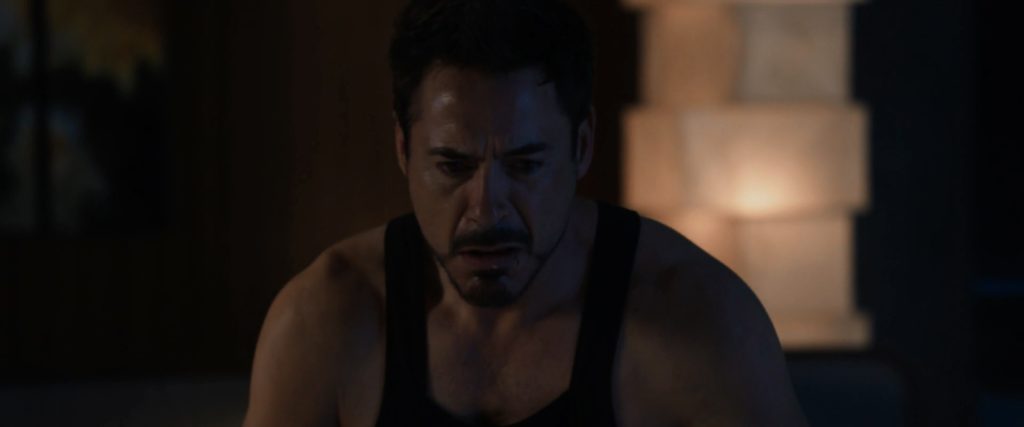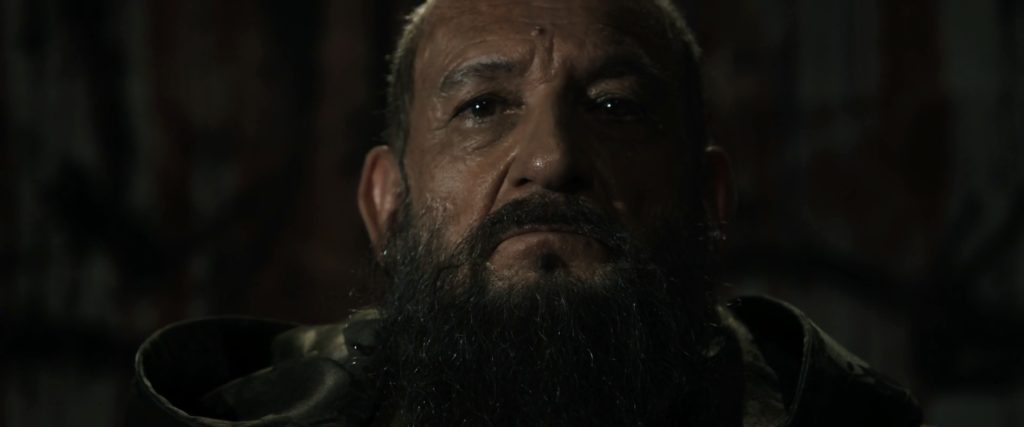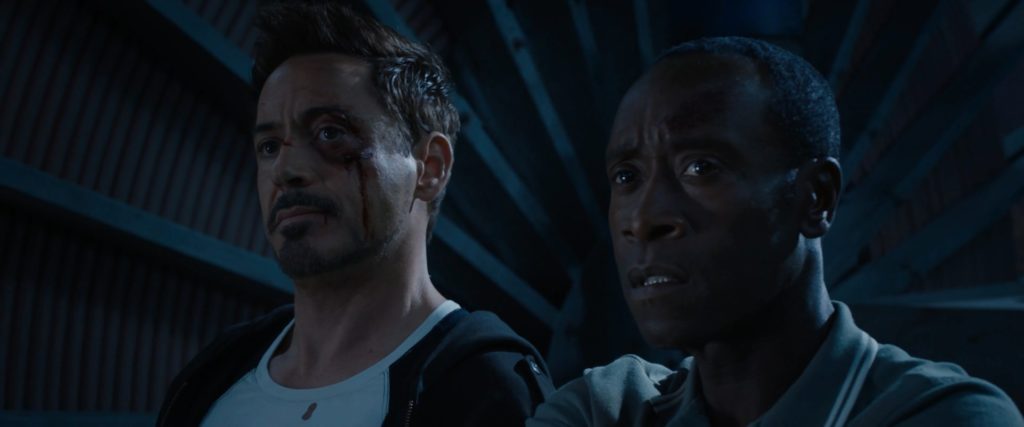In this weekly series, we chronicle the long road undertaken by the Marvel Cinematic Universe movies to arrive at Avengers: Infinity War. We introspect and discuss the movies from a critical and commercial standpoint while also considering the development efforts that went behind them. These articles may be occasionally sprinkled with spoilers so please make sure to skip the relevant sections when reading.
This post is about the 2013 movie Iron Man 3, the seventh chapter in the Marvel Cinematic Universe.
No more small play. These guys are big. After the gigantic success of one of the riskiest endeavors in the history of superhero movies, Marvel Studios had almost become a household name. Its B-movie characters were now A-list stars. The star-spangled Avenger Captain America was an ideal among idealistic heroes. Thor and Loki were fan-favorites, be it for their physique or their perversity. People were curious than ever to learn more about what went on in Budapest between Black Widow and Hawkeye based on one mere short exchange. And Mark Ruffalo’s brilliantly bottled up performance as mild-mannered scientist Bruce Banner along with the aggressive Hulk meant people quickly forgot he had replaced Edward Norton in the role.
However, one of the biggest beneficiaries of the success of The Avengers was Robert Downey Jr. who played Iron Man and vice-versa. The relationship between Downey Jr. and Marvel Studios has been a give-and-take exchange of sorts. It was his portrayal of Tony Stark and the resulting fan acceptance after all that gave Marvel Studios the confidence to even consider they had a shot at their outrageous ploy and move ahead with the rest of the movies leading up to The Avengers. And yet, Stark was clearly the stand-out in the team-up movie, his appeal growing exponentially after audiences saw him in action with the other players in the team. Uber-cool was an understatement; Stark was now approaching the league and legendary status of such superheroes as Batman and Superman that have been around for forever. And The Avengers effect strongly rubbed off on his own solo movie, as Iron Man 3 would prove.
One of the best things the movie did was actively addressing and even continuing to evolve the character of Stark after the events of The Avengers instead of ignoring them. The result then, is a character who previously thought he was the only superhero in the universe but has now fought an alien army side-by-side with an Asgardian God, a giant green-raging monster, two S.H.I.E.L..D assassins and the MCU’s first superhero created with help from his own father. Not only does this tell Stark he’s not alone, but it also drives home the point that Stark doesn’t stand much of a chance against these heroes, or the alien threat he helped fight, never mind he was the one who drove the nuke to subdue it. This is a Stark who realizes he’s nothing without his suit and is massively under-powered in comparison to his compatriots. That, coupled with the near-death experience of dying in outer space and barely making it out of that portal alive meant there had to be some sort of lasting impact on Stark’s psyche.
This translates into Stark suffering from bouts of anxiety and Post-Traumatic Stress Disorder after the Battle of New York (as the famed Avengers incident comes to be referred to as). In his bid to escape his anxiety, he develops dozens upon dozens of suits and after the previously seen Mark VII, reaches all the way up to Mark XLII. His relationship with his girlfriend Pepper is in disarray, even though they’ve moved in together. His bromance with Rhodey suffers as well; Rhodey, genuinely concerned about Stark’s obsession with his suits offers to help but Stark pushes him away. It wouldn’t be incorrect to assume he suffers from intense insecurity over the abilities of his co-team members and desires to take his armor to the next level by injecting dozes of serum into himself to be able to summon the armor at will and from any distance. This is a Stark who is just not comfortable leaving the confines of his Iron Man suit.
 The second piece of this puzzle has to do with a piece of technology existing in the movie’s universe called Extremis. Lifted straight out of Warren Ellis’ (after whom President Ellis is named) epic 6-issue run of Iron Man comics titled Extremis drawn by artist Adi Granov (who was responsible for creating the original Iron Man designs in the 2008 movie), Extremis in simple terms, is a serum that recodes the body’s repair mechanism granting extraordinary healing abilities to the host. The project is spearheaded by Aldrich Killian of Advanced Idea Mechanics (AIM) who tries in vain to strike a partnership with Stark Industries, only to be brushed aside by both Tony and Pepper. Extremis as it turns out, is literally a ticking time-bomb and not all humans accept the serum graciously with many rejecting it with disastrous and explosive results.
The second piece of this puzzle has to do with a piece of technology existing in the movie’s universe called Extremis. Lifted straight out of Warren Ellis’ (after whom President Ellis is named) epic 6-issue run of Iron Man comics titled Extremis drawn by artist Adi Granov (who was responsible for creating the original Iron Man designs in the 2008 movie), Extremis in simple terms, is a serum that recodes the body’s repair mechanism granting extraordinary healing abilities to the host. The project is spearheaded by Aldrich Killian of Advanced Idea Mechanics (AIM) who tries in vain to strike a partnership with Stark Industries, only to be brushed aside by both Tony and Pepper. Extremis as it turns out, is literally a ticking time-bomb and not all humans accept the serum graciously with many rejecting it with disastrous and explosive results.
Tying both these pieces together is the final piece of the movie in Ben Kingsley’s The Mandarin. Leader of The Ten Rings terrorist organization (which was responsible for Stark’s capture in the first movie), the Mandarin has a penchant for theatrics and wears ten literal rings on his fingers, each supposed to hold some form of power. Inspired and influenced by the Chinese arts, the Mandarin is Iron Man’s sworn enemy and means nothing but to wreak destruction upon the tinkerer of suits. The catch then? This is not the version of the Mandarin that the movie presents but goes a step further in its ambitiousness and twists it to make even a terrorist like The Mandarin a mere pawn in the grand scheme of things.
With the three pieces in place, the event that really thrusts things in motion and begins to unravel the connection between the trio involves an accidental explosion at the TCL Chinese Theater. The said explosion injures Stark’s bodyguard and confidante Happy Hogan and is quickly attributed to The Mandarin causing an angered Stark to issue a public threat to the terrorist on live television. Stark challenges The Mandarin to fight at his house and even gives away his address, which causes The Mandarin’s forces to swarm by his Malibu mansion and totally destroy it. He somehow escapes to Tennessee; Jarvis takes him there as part of a pre-programmed flight plan that was an outcome of Stark’s investigation into The Mandarin’s bombings. With his house gone, his suit out of power and nothing but a kid to befriend him, Stark is up against the Mandarin with his back against the wall. And thus begins his investigation into the connection between The Mandarin, Aldrich Killian, AIM and his former one-night stand Maya Hansen (the botanist who creator of the Extremis serum) that unravels a web of threads, lies and conspiracies that threatens to impact the President of the United States.
 After going through an intensely stressful time handling the first two Iron Man movies, Jon Favreau opted to do something lighter and went to helm Magic Kingdom instead. As is the case with most stars, Downey Jr. was comfortable working with people he had already worked on which resulted in him pitching his 2005 Kiss Kiss Bang Bang director Shane Black as the perfect choice for Iron Man 3. Known for his dark comedy and quick witted style of filmmaking, Black turned out to be the perfect choice to take over the movie in order to maintain Iron Man’s DNA. Black worked with writer Drew Pearce on a script that continued Stark’s story from The Avengers while adding elements unseen in Iron Man movies to make it stand-out from Favreau’s installments while keeping in spirit with the first two. Among the choices made was infusing the movie with the buddy-cop genre highlighting and emphasizing the relationship between Stark and Rhodey. The duo also expanded upon Stark’s relationship with Pepper and his PTSD, imposing challenges that wouldn’t feel forced but would play out as a natural extension of prior events. Finally, and most importantly, they tried hard to sprinkle the movie with lots of surprises, including as many unexpected twists as they could while writing moments that played against the audience expectations of a scene.
After going through an intensely stressful time handling the first two Iron Man movies, Jon Favreau opted to do something lighter and went to helm Magic Kingdom instead. As is the case with most stars, Downey Jr. was comfortable working with people he had already worked on which resulted in him pitching his 2005 Kiss Kiss Bang Bang director Shane Black as the perfect choice for Iron Man 3. Known for his dark comedy and quick witted style of filmmaking, Black turned out to be the perfect choice to take over the movie in order to maintain Iron Man’s DNA. Black worked with writer Drew Pearce on a script that continued Stark’s story from The Avengers while adding elements unseen in Iron Man movies to make it stand-out from Favreau’s installments while keeping in spirit with the first two. Among the choices made was infusing the movie with the buddy-cop genre highlighting and emphasizing the relationship between Stark and Rhodey. The duo also expanded upon Stark’s relationship with Pepper and his PTSD, imposing challenges that wouldn’t feel forced but would play out as a natural extension of prior events. Finally, and most importantly, they tried hard to sprinkle the movie with lots of surprises, including as many unexpected twists as they could while writing moments that played against the audience expectations of a scene.
Arguably, the biggest twist they implanted in the movie involved its central villain and angered and divided fans on message boards and forums after the movie’s release. [Now I know we’ve added a disclaimer beforehand but the rest of this paragraph deals with the biggest spoiler in the movie, so exercise caution while reading.] The Mandarin really, was nothing like the Mandarin in the original comics but merely a cover by Aldrich Killian for carrying out his Extremis experiments. Every time one of the subjects rejected the virus and went kaboom, the explosion was attributed to this proxy terrorist . Ben Kingsley’s character was in reality a British actor named Trevor Slattery who was a fellow for hire and wasn’t even aware of the ramifications of his fake videos. The real Mandarin in disguise was Killian who later on even gains the ability to breathe fire like a dragon.
This was a twist almost no one saw coming in the theaters. To preserve the suspense, Guy Pearce was largely kept out of the marketing campaign and Ben Kingsley was projected as the big baddie. Fans were upset at how their favorite and most anticipated antagonist was handled, and felt he had received a shoddy treatment. I myself remember being a bit aghast at The Mandarin being wasted as an opportunity, but soon came to terms with it and even found the twist a brilliant piece of sleight in retrospect. What fans tend to forget though, is that there have been several versions of The Mandarin, and just like Marvel does with most of its characters, it combined the most appropriate ones and tailored them to the needs of the story. The result was the presence of both, a Mandarin inspired directly from the 1960s comics as well as one with its roots in modern day comics, most famously this image (I can’t seem to remember the comic; help in the comments below). By assiduously combining the best of both versions, Black and Pearce created a Mandarin that was as true to the modern comics as possible while also serving the story and respecting his origins. Nevertheless, the severe fan backlash at the character’s treatment led Drew Pearce to write and direct a short film featuring Trevor Slattery to rectify his “mistake”. Whether we’ll ever see the true version of the character in an Iron Man 4 is up for debate.
 As is the case with most MCU movies, writer Drew Pearce packs the story with lots of elements, plot threads and banter in an attempt to throw plenty of stuff at the audience in the hopes that a lot will stick. Consequently, the movie conveys a lot more in its 2 hour 10 minute run time than most movies could manage, although it also leads to some sequences being played out shorter than expected. One of the chief sequences that I felt suffered as a result is the barrel of monkeys scene in mid-air that sees Iron Man rescue a bunch of high-post US officials by helping them catch each other in their fall. It’s a sequence that looks astounding in IMAX thanks to the use of real sky-divers and real-footage as opposed to green screen effects with VFX only being used for compositing the different practically shot takes into one coherent fall. It’s one of the film’s major action sequences aside from the destruction of Stark’s mansion and the heavy-handed climax.
As is the case with most MCU movies, writer Drew Pearce packs the story with lots of elements, plot threads and banter in an attempt to throw plenty of stuff at the audience in the hopes that a lot will stick. Consequently, the movie conveys a lot more in its 2 hour 10 minute run time than most movies could manage, although it also leads to some sequences being played out shorter than expected. One of the chief sequences that I felt suffered as a result is the barrel of monkeys scene in mid-air that sees Iron Man rescue a bunch of high-post US officials by helping them catch each other in their fall. It’s a sequence that looks astounding in IMAX thanks to the use of real sky-divers and real-footage as opposed to green screen effects with VFX only being used for compositing the different practically shot takes into one coherent fall. It’s one of the film’s major action sequences aside from the destruction of Stark’s mansion and the heavy-handed climax.
The ending sees Stark bring in his army of Iron Legion to mount a full-fledged assault at the Oil Tanker where Killian has held Pepper. It’s a scene that has a lot of moving parts and involves everyone from Stark, Rhodey, Killian and even Pepper and gives all of them some kick-ass moments. In particular Potts steals the show as she puts an end to the fight under the influence of the virus. The multiple suits with their own unique qualities is an arduous task to handle but is done well by visual effects vendors lead by Weta Digital and Digital Domain which take over CGI duties from ILM. Each suit is unique in its own way and the visual effects guys worked behind the scenes to conceptualize all the suits never mind the few seconds they’re visible for. This gives us all sorts of suits with nicknames ranging from Heart-Breaker and Silver-Centurion to the Hulkbuster-esque Igor. All the effort wasn’t in vain though as it earned them an Academy Award Nomination for Best Visual Effects.
This isn’t to say the movie is all hearty without any flaws; in fact it does possess quite a few. One of the more questionable decisions the filmmakers took was to allow Stark to remotely pilot his suit; it strips him off all the danger and threat surrounding Stark being inside his own suit and instead makes Iron Man more like another virtual reality environment for Stark to toy around with. Equally questionable is the choice of inserting odd jokes at serious moments – two of them happen around the (presumed) deaths of some of the movie’s major characters and while Black tries to balance it off well, it would’ve served the movie well to distance itself from humor at least around some of its darker moments. Finally, while the choice of songs and musical score are competent enough, nothing can beat Ramin Djawadi’s epic score and theme for Iron Man, most definitely not Bryan Tyler’s orchestral arrangement that comes across as too comical in tone and a bit dated for its time.
In terms of performances, I’d have to say Ben Kingsley absolutely destroys the role he’s in (both literally and figuratively). That’s a line I quote quite often and I’m glad it found use in this piece. He’s equally menacing as The Mandarin who issues threats over video clips and hilarious as the bumbling stage actor Trevor Slattery, even switching from one to the next in a heartbeat. If there ever is an Iron Man 4, I’d love to see him return for the role of the actual Mandarin. Guy Pearce portrays Killian with a sense of calm that’s about to burst any moment but never quite erupts, which is a nuance difficult to portray. Gwyneth Paltrow gets a lot to do as Pepper Potts, the new CEO of Stark Industries, and she uses the opportunity well. The movie even hints at her donning the Iron Man armor and becoming the crime fighter Rescue as in the comics. Rebecca Hall is largely delegated to a supporting role even though she displays flashes of brilliance in the scenes that she’s in. Word has it that she was originally supposed to be the real big baddie controlling Killian’s actions until Marvel’s then committee panicked at the thought of a female villain reducing her role to its current form. Like Pepper, Rhodey too has a lot more to do in this movie and Don Cheadle really comes off on his own as Col. James Rhodes, bouncing off quips from Stark. The sequence where he and Stark bust the Mandarin together is outright hilarious. Finally, Downey Jr. displays the much-needed growth and takes Stark to a different place. No longer the womanizer and asshole that he was in the first two movies, he becomes much more concerned with protecting himself and the people around him from unimaginable threats and conveys well the pangs of anxiety he’s hit with.
 Iron Man 3 was the first follow-up to the phenomenon that was The Avengers and it was natural for that movie’s success to rub-off a bit on this one. The result was the then historic second-largest opening for Stark’s solo adventure at $174 million in North America alone and a cumulative domestic gross of $409 million. The movie ended its box-office run with a worldwide total of $1.2 billion becoming the fifth highest grossing movie of all time. Just when Marvel Studios thought that the only movies in its shared universe entering the billion dollar club would be the Avengers movies, here was a standalone movie, albeit the third in its trilogy that managed to surpass a billion dollars while outgrossing both its predecessors combined. Heralded as fun by both critics and audiences alike, Iron Man 3 enjoyed a modest reception as future movies would continue to reap the benefits of the shared universe formula.
Iron Man 3 was the first follow-up to the phenomenon that was The Avengers and it was natural for that movie’s success to rub-off a bit on this one. The result was the then historic second-largest opening for Stark’s solo adventure at $174 million in North America alone and a cumulative domestic gross of $409 million. The movie ended its box-office run with a worldwide total of $1.2 billion becoming the fifth highest grossing movie of all time. Just when Marvel Studios thought that the only movies in its shared universe entering the billion dollar club would be the Avengers movies, here was a standalone movie, albeit the third in its trilogy that managed to surpass a billion dollars while outgrossing both its predecessors combined. Heralded as fun by both critics and audiences alike, Iron Man 3 enjoyed a modest reception as future movies would continue to reap the benefits of the shared universe formula.
This however, did not mean that Marvel was on a home-run streak. There was still one movie left before it would enter that phase of continuous successes. The one movie that would not only follow-up this monster hit but become well-known as one of Marvel Studios’ last or even only Rotten Tomato to date.





